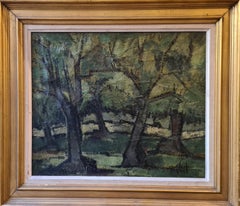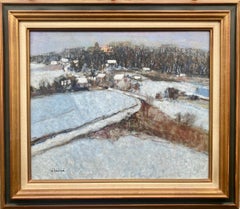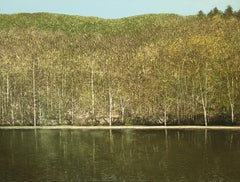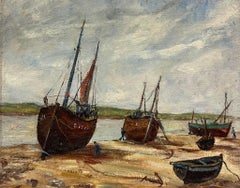Paint Landscape Paintings
1910s Impressionist Paint Landscape Paintings
Watercolor
Mid-20th Century Expressionist Paint Landscape Paintings
Canvas, Oil
20th Century Pointillist Paint Landscape Paintings
Canvas, Oil
2010s Paint Landscape Paintings
Canvas, Oil
Mid-20th Century Impressionist Paint Landscape Paintings
Oil
2010s Aesthetic Movement Paint Landscape Paintings
Canvas, Linen, Oil
Mid-20th Century Modern Paint Landscape Paintings
Oil
Mid-20th Century American Impressionist Paint Landscape Paintings
Masonite, Oil
2010s Impressionist Paint Landscape Paintings
Oil
Early 20th Century Impressionist Paint Landscape Paintings
Oil
Mid-20th Century Modern Paint Landscape Paintings
Canvas, Oil
20th Century Impressionist Paint Landscape Paintings
Oil
1970s Modern Paint Landscape Paintings
Canvas, Oil
Early 17th Century Baroque Paint Landscape Paintings
Canvas, Oil
1960s American Impressionist Paint Landscape Paintings
Canvas, Oil, Cardboard
19th Century Impressionist Paint Landscape Paintings
Oil
21st Century and Contemporary Impressionist Paint Landscape Paintings
Oil
Late 20th Century Realist Paint Landscape Paintings
Oil, Board, Canvas
20th Century Impressionist Paint Landscape Paintings
Oil
1910s Victorian Paint Landscape Paintings
Oil
21st Century and Contemporary Contemporary Paint Landscape Paintings
Oil
1970s Abstract Paint Landscape Paintings
Canvas, Oil
Late 18th Century English School Paint Landscape Paintings
Oil
21st Century and Contemporary Impressionist Paint Landscape Paintings
Canvas, Oil
1940s Naturalistic Paint Landscape Paintings
Canvas, Oil
Early 19th Century Impressionist Paint Landscape Paintings
Oil
Late 20th Century Expressionist Paint Landscape Paintings
Canvas, Oil
Mid-20th Century Impressionist Paint Landscape Paintings
Oil
Mid-20th Century Impressionist Paint Landscape Paintings
Ink, Gouache
2010s Impressionist Paint Landscape Paintings
Canvas, Oil
1970s Paint Landscape Paintings
Paper, Watercolor
Artist Comments
Bright wildflowers bloom in the foreground while the waves crash against the cliffs in the distance. The sky, painted in soft blues and whites, merges seamles...
21st Century and Contemporary Impressionist Paint Landscape Paintings
Oil
19th Century French School Paint Landscape Paintings
Oil
Late 20th Century Realist Paint Landscape Paintings
Canvas, Oil, Board
Artist Comments
Artist Jenn Williamson presents an ethereal landscape that conveys a message of optimism and love. "I seek to inspire others to reflect upon the beauty that s...
21st Century and Contemporary Abstract Paint Landscape Paintings
Oil
Mid-20th Century Post-Impressionist Paint Landscape Paintings
Canvas, Oil
2010s Expressionist Paint Landscape Paintings
Canvas, Oil, Cardboard
Early 1900s Paint Landscape Paintings
Canvas, Oil
Late 19th Century Victorian Paint Landscape Paintings
Oil
1940s American Realist Paint Landscape Paintings
Canvas, Oil
Late 18th Century Old Masters Paint Landscape Paintings
Oil
21st Century and Contemporary Contemporary Paint Landscape Paintings
Canvas, Wood, Oil
20th Century Impressionist Paint Landscape Paintings
Oil
18th Century Old Masters Paint Landscape Paintings
Oil
2010s Abstract Paint Landscape Paintings
Cotton Canvas, Mixed Media, Oil
Late 20th Century Post-Impressionist Paint Landscape Paintings
Canvas, Paint, Cotton Canvas, Oil, Board
Late 19th Century Other Art Style Paint Landscape Paintings
Canvas, Oil
Late 20th Century American Modern Paint Landscape Paintings
Canvas, Oil
Early 1900s Hudson River School Paint Landscape Paintings
Oil, Linen
1850s Victorian Paint Landscape Paintings
Oil
21st Century and Contemporary Impressionist Paint Landscape Paintings
Canvas, Oil
Mid-20th Century Paint Landscape Paintings
Oil
2010s Contemporary Paint Landscape Paintings
Gold Leaf
1990s Post-Impressionist Paint Landscape Paintings
Canvas, Oil
1880s Impressionist Paint Landscape Paintings
Oil, Canvas
1980s Contemporary Paint Landscape Paintings
Canvas, Oil
2010s Neo-Expressionist Paint Landscape Paintings
Paper, Oil Crayon, Acrylic
2010s Abstract Paint Landscape Paintings
Canvas, Acrylic
2010s Expressionist Paint Landscape Paintings
Canvas, Linen, Oil
Mid-20th Century Abstract Paint Landscape Paintings
Acrylic, Board




